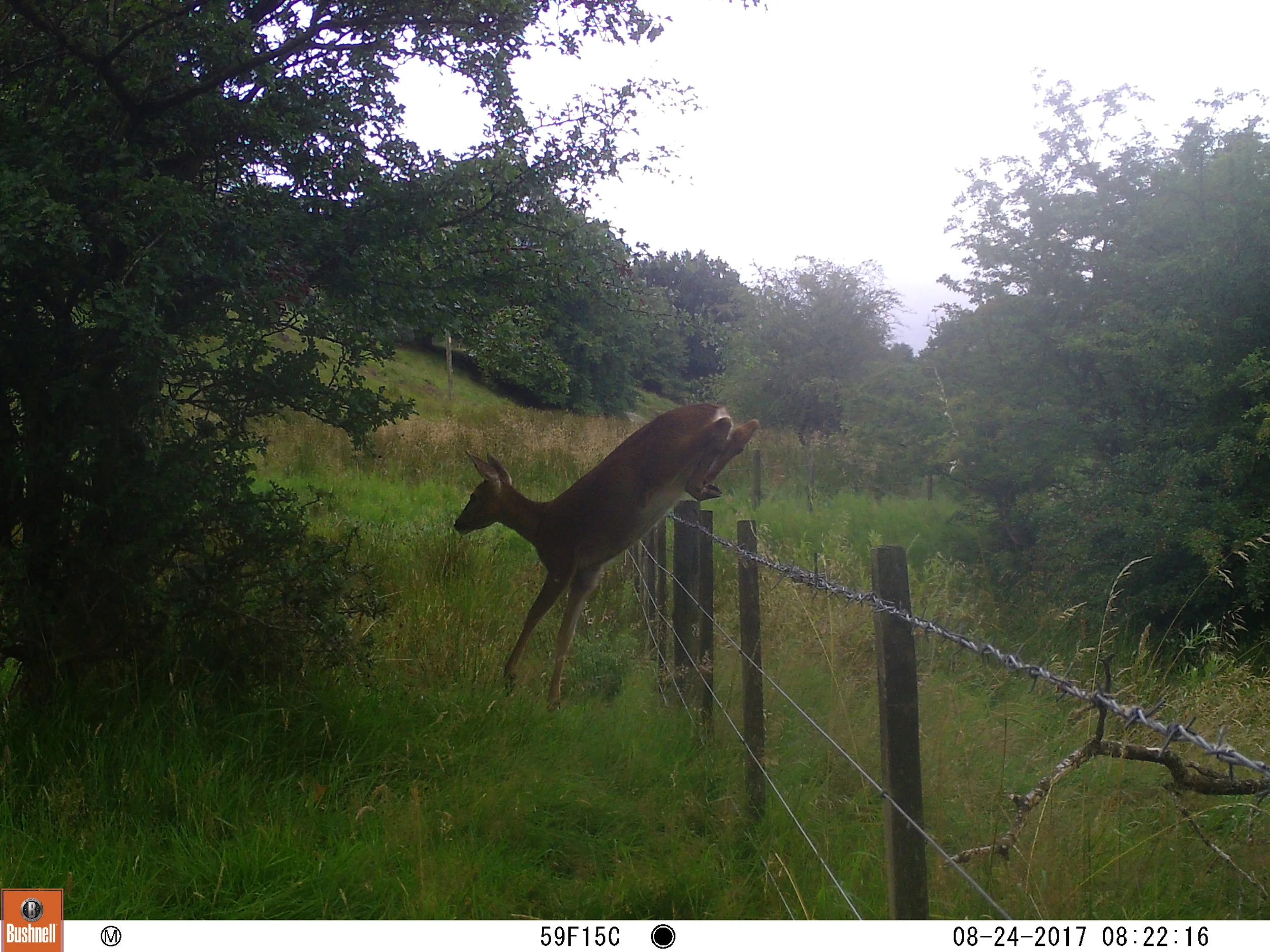You will have learned if you have read Clare's pieces about bees, that she has wanted to be a beekeeper since she was young. I had a different wish. Mine was about deer - in particular the Roe. I can offer no sensible explanation for the origin of what has been at times an obsession. I have been fascinated by Roe for over 35 years and at the heart of my relationship to them, lies a fundamental contradiction. As well as watching, studying and photographing them, I shoot them. Whether I believe there is a hunter gene in our make-up - a throwback to hunter/gatherer times, I do not know, however since I was a small boy I have wanted to hunt. At different stages in my life my quarry has varied but since the late 1970s the Roe has been the focus of my attention.
My first and still favourite book on the subject, Following the Roe by Frank Holmes, bears my handwritten date 'June 1977.' Much has changed in our knowledge of the Roe since then and for a more up to date resumé of Roe, especially in the north-east, see Ian Smales' excellent article.
Roe (Capreolus Capreolus) are one of only two deer species native to Britain, the other being the Red. The four species, Fallow, Sika, Muntjac and Chinese Water Deer that are now considered native have all been introduced. Roe remains have been found in Norfolk dating back 400,000 years. However, it is best to think of Roe as having been permanent residents somewhere in England or Scotland since the end of the last Ice Age.
Over the years I have been lucky enough to follow and stalk Roe on some wonderful estates in Northumberland including Matfen, Featherstone, Blenkinsopp and Whitfield. It would be easy to assume that my only interest lies in the shooting, but like many other stalkers, pulling the trigger is often the last of the priorities. Good stalking involves much more than killing. There needs to be a sound knowledge of the ground, the conditions, the likelihood of the presence of other people and deep understanding of the behaviour of the deer themselves. It also provides a wonderful opportunity to be in nature and to appreciate all that can be observed. I could, and indeed might, write a book about it one day.
More importantly here perhaps is how my passion relates to Liddells. Before we even bought the land I was stalking in the neighbourhood and there have always been deer in and around Liddells. I once saw eleven Roe leaving the Scrub and disappearing onto the Top Grazing. So many at once is truly extraordinary, although five, six or seven might be common, especially in hard weather, when for reasons which are not fully understood, Roe seem to congregate in groups despite not being a herd species like the Red.
We have decided not to shoot Roe on Liddells unless it becomes necessary. Why might it be necessary? Because Roe can do a great deal of damage to an environment. Roe are primarily browsers rather than grazers. When there are young trees they can devastate attempts to establish new planting as their favourite nibble is usually the tree's growing tip. Happily we are not commercial in our forestry endeavours and try to protect any new trees with either tube guards or posts and wire.
As well as browsing, male Roe (bucks) cause damage by fraying. Bucks choose a youngish sapling, often about the thickness of a thumb, and thrash this with their antlers to remove the velvet which covers their antlers for a period in the spring (see photograph below). Seeing a buck fraying is quite a sight and the violent movement of a sapling whipping about is often the first sign that there is a buck about. They do not confine their fraying to one sapling, known as a fraying stock, but will often fray at various intervals along their well used paths. Fraying can result in the complete removal of the bark and this will kill the tree.
This year (2017) on Liddells we have not had to confront any deer problems but instead have had the joy of a resident female (doe) and her twin doe offspring. My birthday present trail camera has recorded over 50 sightings and I have had great fun producing a chart setting out the times of the images captured. I have been interested in this because the received wisdom is that Roe are crepuscular - 'related to twilight' and used to describe animals that are most often seen in the half light times i.e. dawn and dusk. I have often wondered if this is an accurate statement about Roe as they can be seen at any times of the day or night. However my 'camera never lies' and the findings reveal that although the Roe doe and her kids have been moving in every hour except between noon and two in the afternoon, the majority of their movements are indeed in the half light hours.
I have included some of the trail camera pictures here, and one of fraying stock. Further information can be found here.
